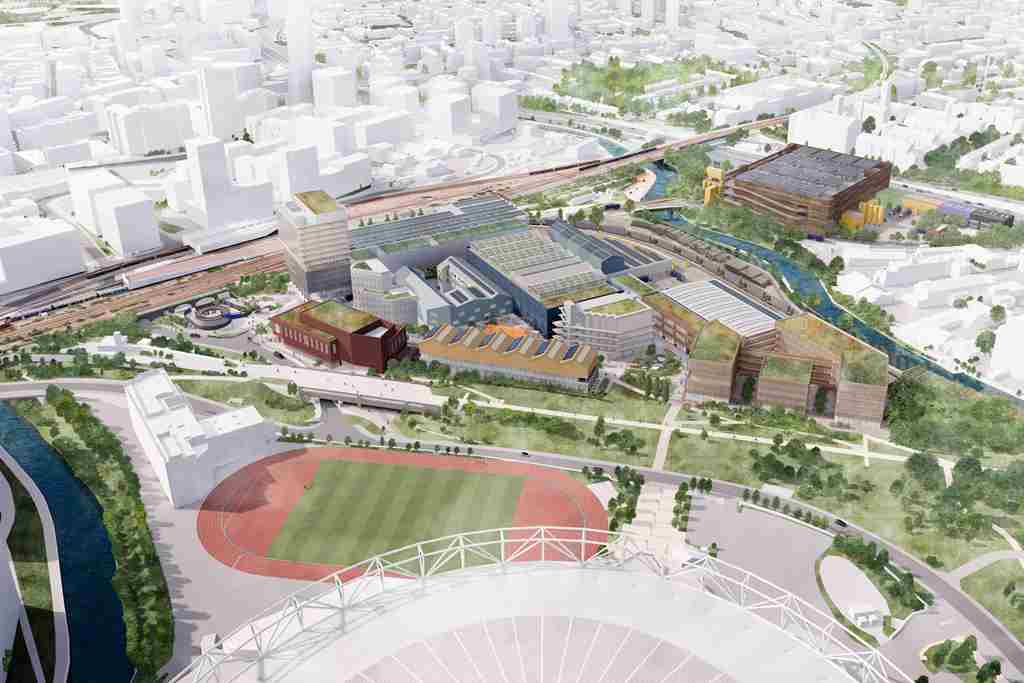Network Rail is looking to turn the old Bow Goods Yard into a rail freight campus and last mile logistics hub.
The site is the final parcel of London 2012 Olympic legacy land to be unlocked and is Network Rail Property’s first independent planning submission.
Bow Goods Yard is considered vital to London’s construction sector, as more than a million tonnes of aggregate a year passes through it.
The regeneration scheme is designed to improve rail freight capacity and efficiency by consolidating operations, and enclosing and screening a concrete-batching facility, which enables an integrated last mile logistics hub to be brought forward.
Under the industrial-led masterplan, up to three million sq ft of floorspace will also be created, including heavy and light industrial space. A range of leisure facilities is also proposed, with the flexibility for up to 350,000 sq ft destination leisure supported by 35,000 sq ft of food and beverage alongside 55,000 sq ft of sports pitches to complement existing facilities on the Queen Elizabeth Olympic Park.
Network Rail group property director Robin Dobson said: “Transforming this strategically underutilised freight site into the largest industrial and logistics campus that serves the whole of East London is central to expanding rail freight capacity and supporting the capital’s logistics market.
“The approval of this masterplan submitted by Network Rail Property is a major milestone in repositioning the property business. It marks our ambition to drive growth and investment across our brownfield estate, taking the lead on complex projects to ensure we deliver the widest mix of commercial and social opportunities. By working closely with local communities and businesses, we are ensuring sites like Bow Goods Yard will support the local area for generations to come.”
The masterplanning team for Bow Goods Yard included: Maccreanor Lavington Architects and Urbanists, UMC Architects, Architecture 00, East, WSP, Make Good, Useful Projects, Montagu Evans and Currie & Brown.
Blazej Czuba, urban studio lead at Maccreanor Lavington, said: “It has been an incredible journey for us developing a project that secures the industrial capacity of the site while positively responding to its unique context in the middle of the Olympic regeneration area. The result is a masterplan showing that heavy industry can successfully co-exist with other functions in a city, and that many industrial uses can be integrated into the street fabric, instead of being relegated to an out-of-town industrial estate. But this is not just an industrial project. The leisure and community component will expand what the Queen Elizabeth Olympic Park has to offer, capitalising on London’s bourgeoning experience economy”.

